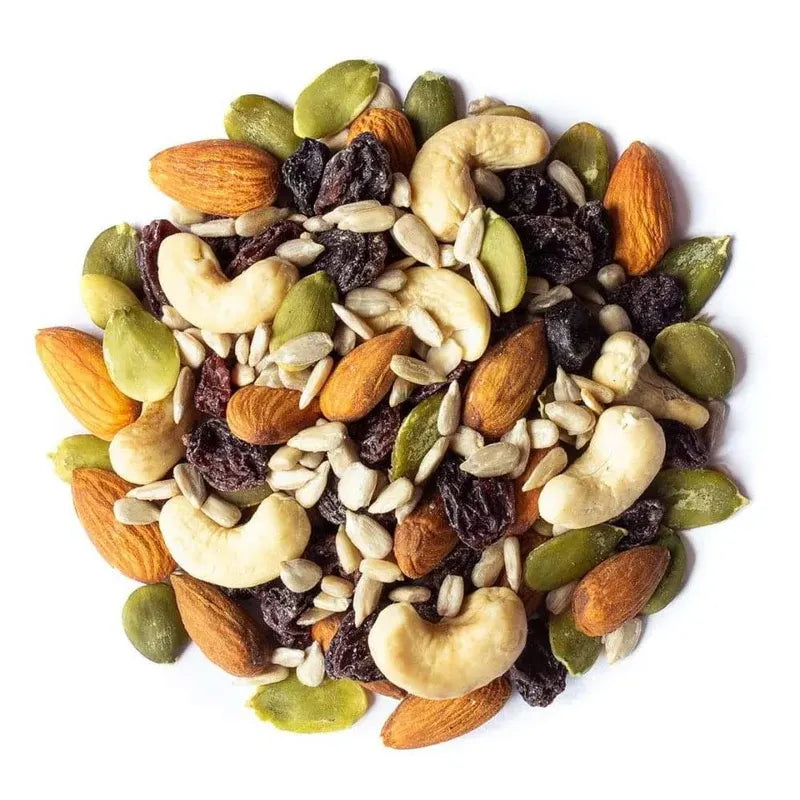Article: The Complete Guide to Organic Cashews
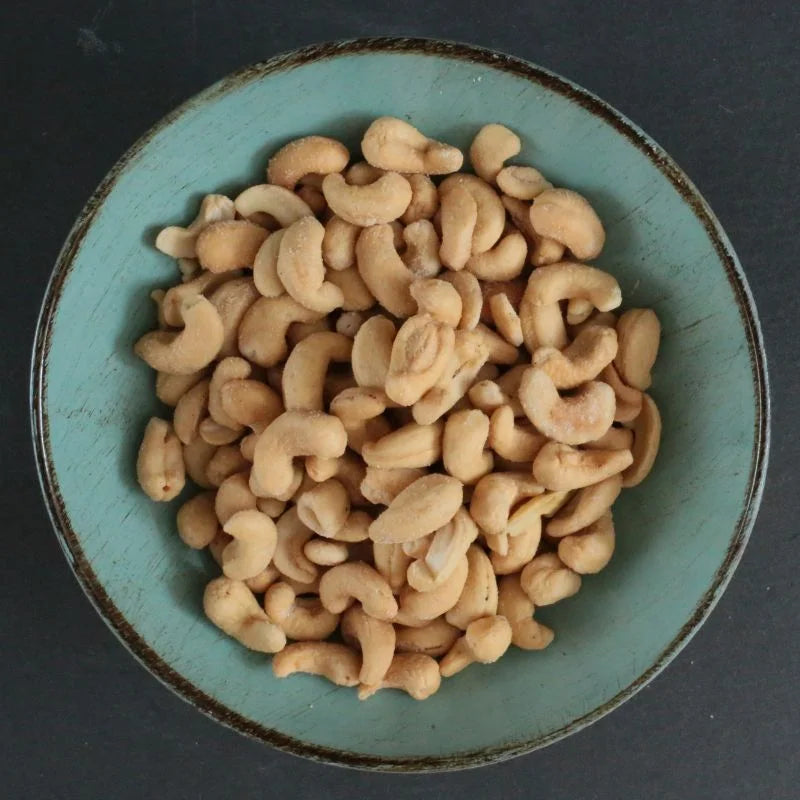
The Complete Guide to Organic Cashews
If you're searching for organic cashews, you’ve come to the right place. cashews stand out not only for their delicious creaminess but also for their health benefits and ethical sourcing. In this guide, we’ll explore what organic cashews are, their nutritional power, how they grow, and why they deserve a spot in your pantry.
What Are Organic Cashews?
Organic cashews come from cashew trees that are cultivated without synthetic pesticides or fertilizers. These nuts grow attached to the unique cashew apple fruit, primarily in tropical climates. Unlike conventionally grown cashews, organic ones ensure purity, sustainability, and often stronger nutrient profiles because of natural growing methods.
Cashew trees can grow up to 14 meters high, though dwarf cultivars reaching up to 6 meters have been developed for better disease resistance and higher yields. The nut’s shell contains urushiol, a natural poison that must be carefully removed during processing to safely consume the edible cashew kernel.
The Health Benefits of Cashews
Cashews are nutritional powerhouses packed with protein, fiber, and heart-healthy fats. Here's a snapshot:
Nutrient |
Amount per 100g |
Benefits |
|---|---|---|
| Calories | ~553 kcal | Great energy source |
| Protein | 18g | Supports muscle repair and growth |
| Healthy Fats | High in MUFA | Supports cardiovascular and brain health |
| Magnesium | 292 mg | Regulates nerve and muscle function |
| Copper | Supports energy production and bone health | |
| Vitamins | Vitamin K, E & B complex | Supports blood clotting, antioxidant protection |
Regular consumption of organic cashews can contribute to heart health, better metabolism, and improved skin and bone strength, making them an ideal snack or ingredient for health-conscious individuals.
Why Choose Organic Cashews Over Regular Cashews?
- Chemical-Free Growing: Organic cashews avoid pesticides and additives, reducing exposure to harmful chemicals.
- Better Nutritional Quality: Natural cultivation methods often yield nuts with richer nutrient profiles.
- Environmental Sustainability: Organic farming supports biodiversity, conserves soil health, and reduces pollution.
- Fair Trade and Ethical Practices: Many organic cashews come from farms committed to fair wages and safe working conditions.
- Superior Taste: Many consumers report a cleaner, richer flavor in organic nuts compared to conventional ones.
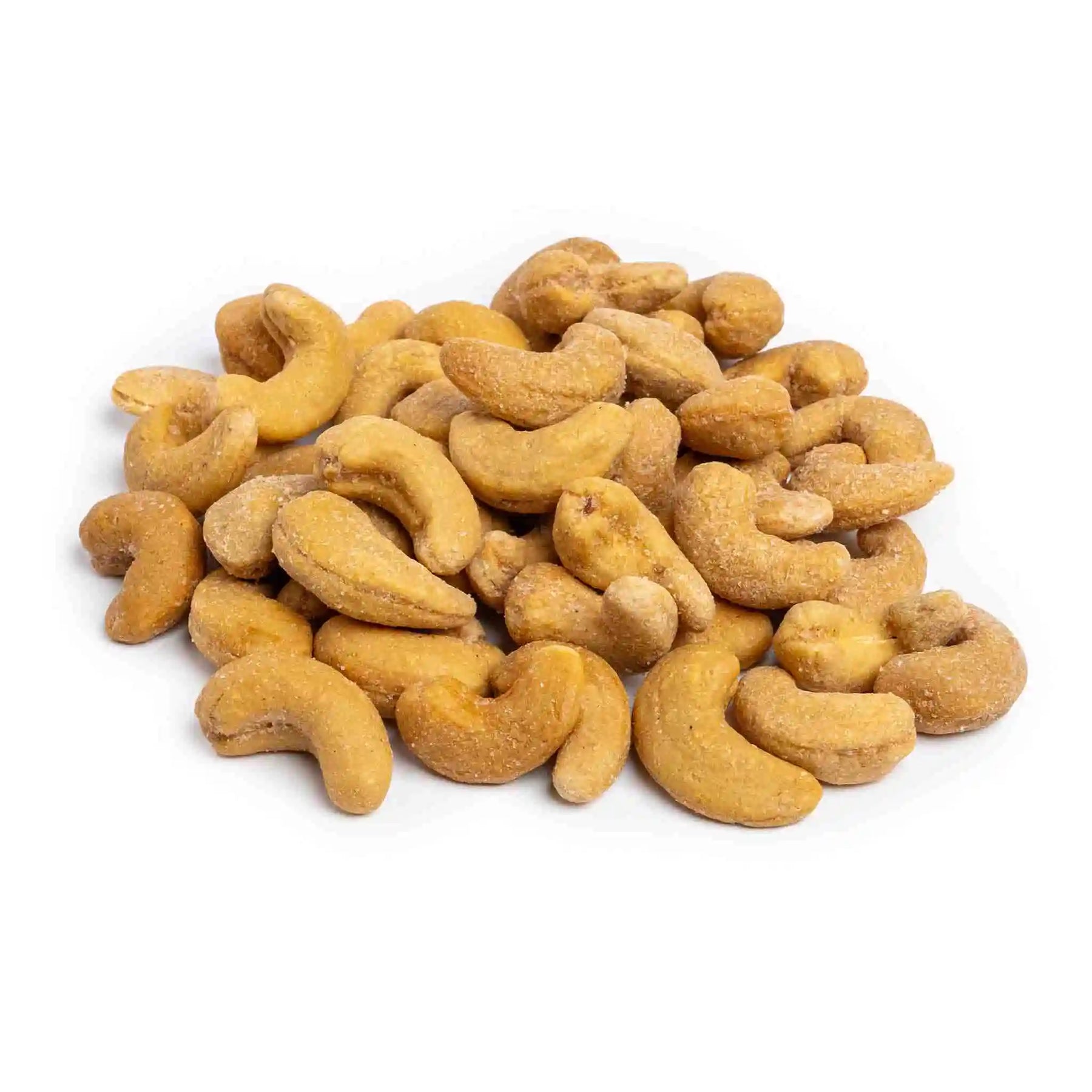
Roasted Salted Cashew Nuts
Savor the rich, buttery flavor of our roasted salted cashew nuts. Perfectly seasoned and lightly roasted to golden perfection, they're a wholesome snack packed with taste and crunch.
Shop NowHow Are Organic Cashews Grown and Harvested?
Organic cashew farming involves careful soil management, natural pest control, and manual harvesting. The cashew apple develops first on the tree, with the cashew nut growing as an accessory at the bottom.
Harvesting is done in multiple stages throughout the year, as cashew trees produce several crops. The nuts are collected by hand using baskets and sacks. Post-harvest, the toxic outer shell undergoes careful processing to extract the safe edible kernel. Many organic producers emphasize minimizing environmental impact during this process.
Exploring the Different Types of Cashews Available
Type |
Description |
Use Cases |
|---|---|---|
| Raw Cashews | Natural, unsalted, unroasted | Snacking, cooking, vegan recipes |
| Roasted Cashews | Dry or oil roasted, salted or unsalted | Healthy snacks, trail mixes, toppings |
| Flavored Cashews | Coated with spices, honey, or chocolate | Gourmet snacking, special occasions |
| Broken Cashew Pieces | Smaller or fragmented nuts, often cheaper | Baking, cooking, added to cereals and bars |
Choosing cashews lets you enjoy clean, authentic flavours no matter which type suits your taste or recipe.
Delicious Ways to Enjoy Organic Cashews Every Day
- Toss raw cashews onto salads or stirred into curries for creaminess and crunch.
- Blend soaked cashews into vegan cheese, sauces, or smoothies.
- Snack on roasted or flavored cashews to curb hunger with nutritious fats and protein.
- Use cashew pieces in baking cookies or granola bars for added texture and nutrition.

Roasted Salted Cashew Nuts
Savor the rich, buttery flavor of our roasted salted cashew nuts. Perfectly seasoned and lightly roasted to golden perfection, they're a wholesome snack packed with taste and crunch.
Shop NowHow to Store Organic Cashews to Keep Them Fresh and Flavorful
Maintaining the crispness and nutritional value of organic cashews requires proper storage:
- Keep in airtight containers away from light and heat.
- Store in a cool, dry place or refrigerate if you live in humid climates.
- Avoid exposure to moisture to prevent mold and rancidity.
- Properly stored, cashews maintain freshness for up to 6–12 months.
Sustainable and Ethical Practices Behind Organic Cashew Production
Organic cashew farming emphasizes sustainability through:
- Avoidance of synthetic pesticides and chemicals.
- Conservation of soil and water resources.
- Promotion of biodiversity.
- Empowerment of smallholder farmers with fair wages and training.
- Transparent supply chains that prioritize environmental and social responsibility.
Choosing cashews supports these positive practices.
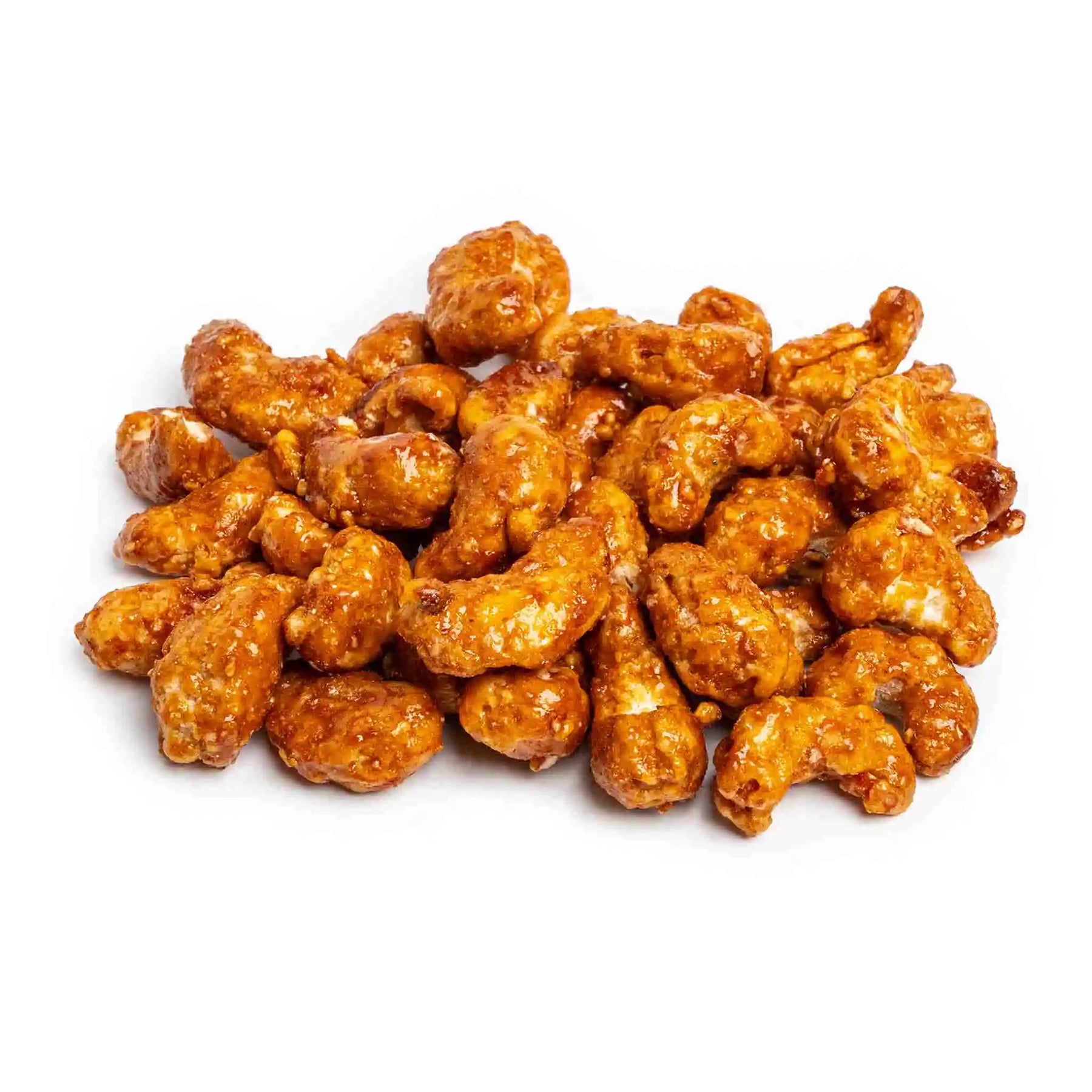
Honey Chilli Cashews
A bold twist on a classic favorite—our Honey Chilli Cashews combine sweet golden honey with a subtle spicy kick. Perfectly roasted for crunch and flavor, this unique snack is a must-try for adventurous taste buds.
Shop NowPairing Cashews with Other Nuts and Snacks from Nuts Oasis
For the best nutritious and tasty experience, consider pairing organic cashews with other premium nuts and dried fruits from Nuts Oasis. Try mixing them with almonds, pistachios, or cranberries for healthy snack combos rich in flavour and texture.
Where to Buy the Best Quality Organic Cashews Online
Finding the cheapest place to buy cashews can be a challenge with so many vendors. Nuts Oasis delivers a variety of organic cashews at unbeatable prices without compromising quality. Shopping online here ensures fresh stock, bulk options, and secure delivery across the UK.
Conclusion
cashews are more than just delicious snacks—they are a natural powerhouse of nutrition and a sustainable choice for health and planet. By choosing organic, you enjoy superior taste, better health benefits, and support ethical practices. For those seeking the cheapest place to buy cashews online in the UK, Nuts Oasis offers exceptional value, freshness, and variety. Start your wholesome snacking journey today!
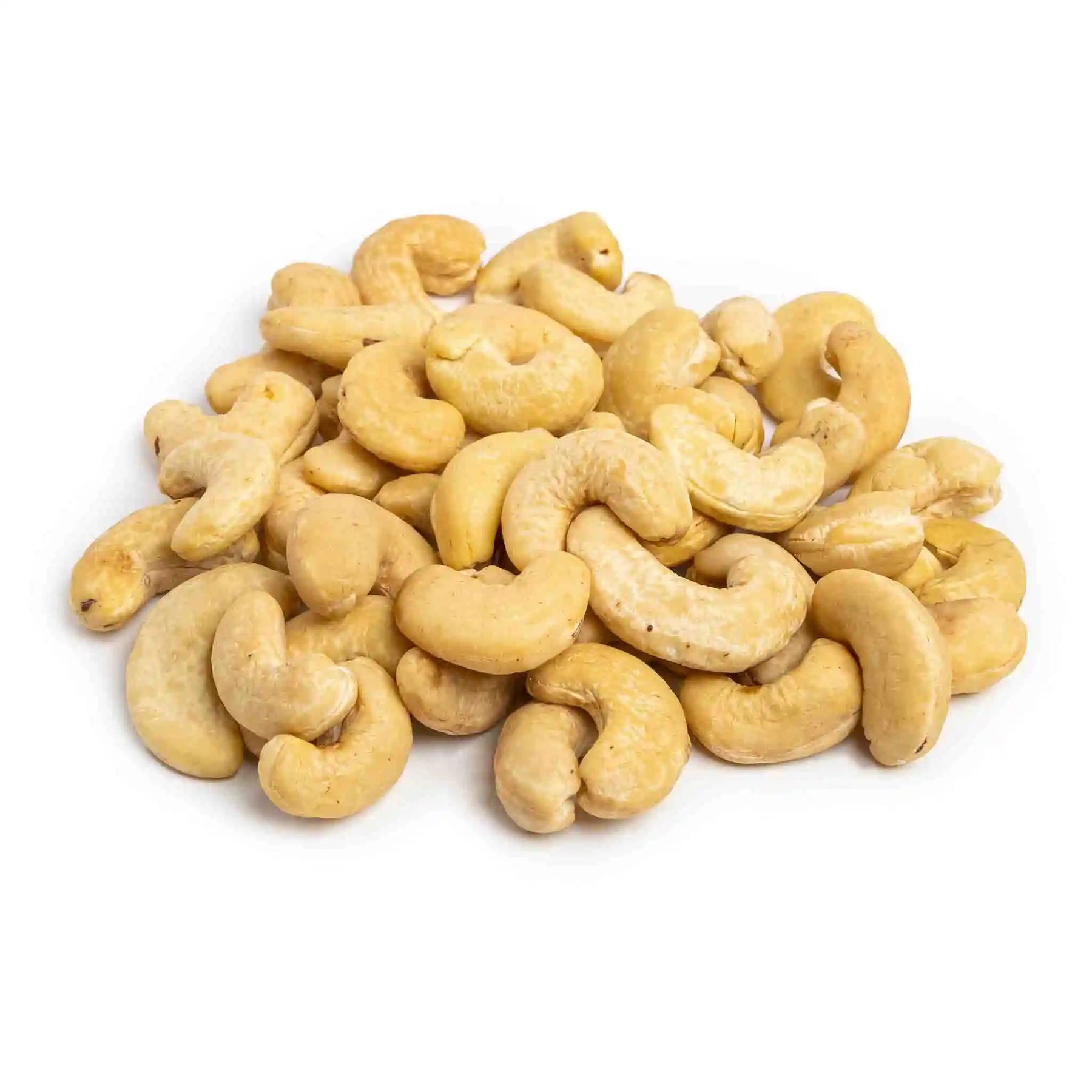
Cashew Collection
Discover our irresistible range of premium cashews—raw, roasted, or coated in chocolate. Each bite delivers a creamy, crunchy delight that’s perfect for guilt-free snacking or gift-worthy indulgence.
Shop CashewsFAQs
Are organic cashews more nutritious than regular cashews?
Organic cashews tend to retain more natural nutrients due to chemical-free farming and minimal processing.
How can I tell if cashews are truly organic?
Look for certifications like Soil Association Organic or USDA Organic on packaging and buy from trusted retailers.
Can I use organic cashews in cooking and baking?
Yes, they work great in both sweet and savory dishes, adding texture and a mild nutty flavour.
How should I store organic cashews at home?
Store airtight in a cool, dry place or refrigerate in humid climates to maintain freshness.
What makes Nuts Oasis the cheapest place to buy organic cashews?
Nuts Oasis buys in bulk directly from trusted suppliers and offers competitive pricing with frequent discounts and fast delivery.

